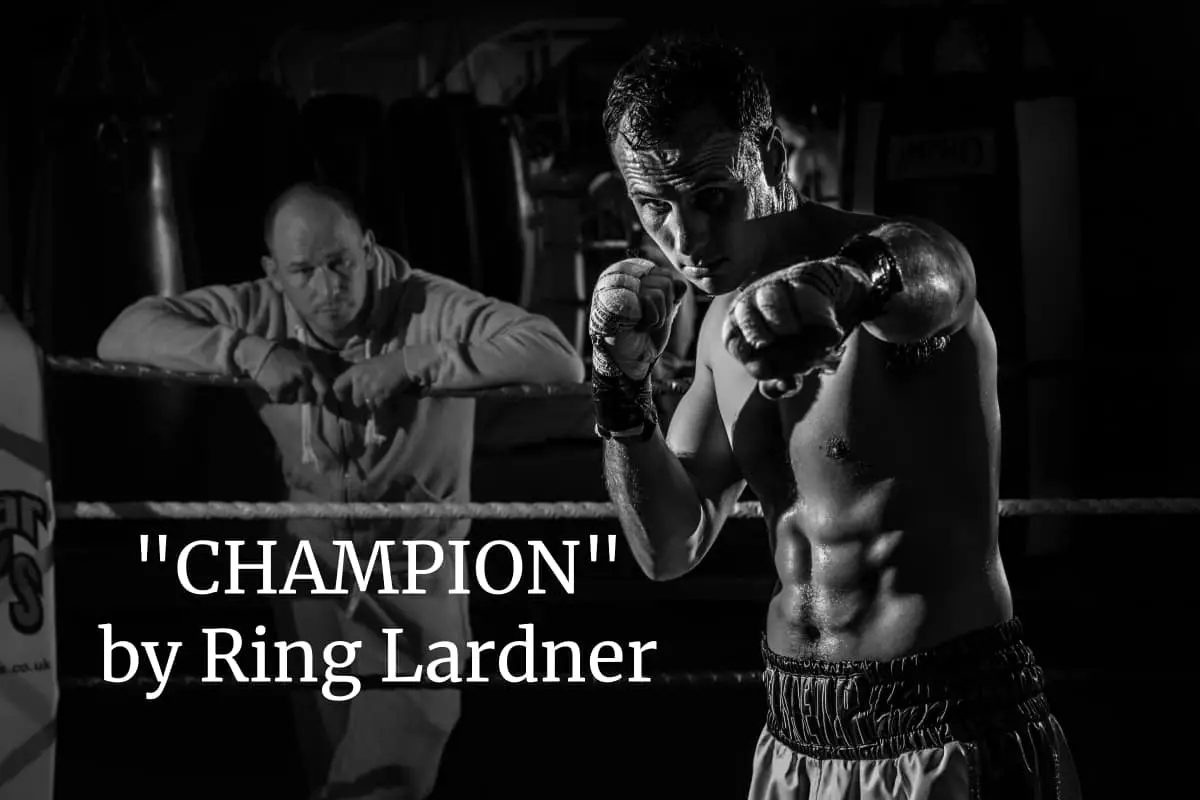“Champion” is a short story about boxing by Ringgold Lardner, who was an American sports columnist as well as a short story writer. He had three main subjects: sports, marriage and theatre. The story was first published in October 1916, Metropolitan magazine.
Lardner’s family was wealthy, he had to wear a brace on his foot until age eleven, he and his one wife had four sons and he died age 48 due to tuberculosis.
“Champion” is a rags-to-riches story.
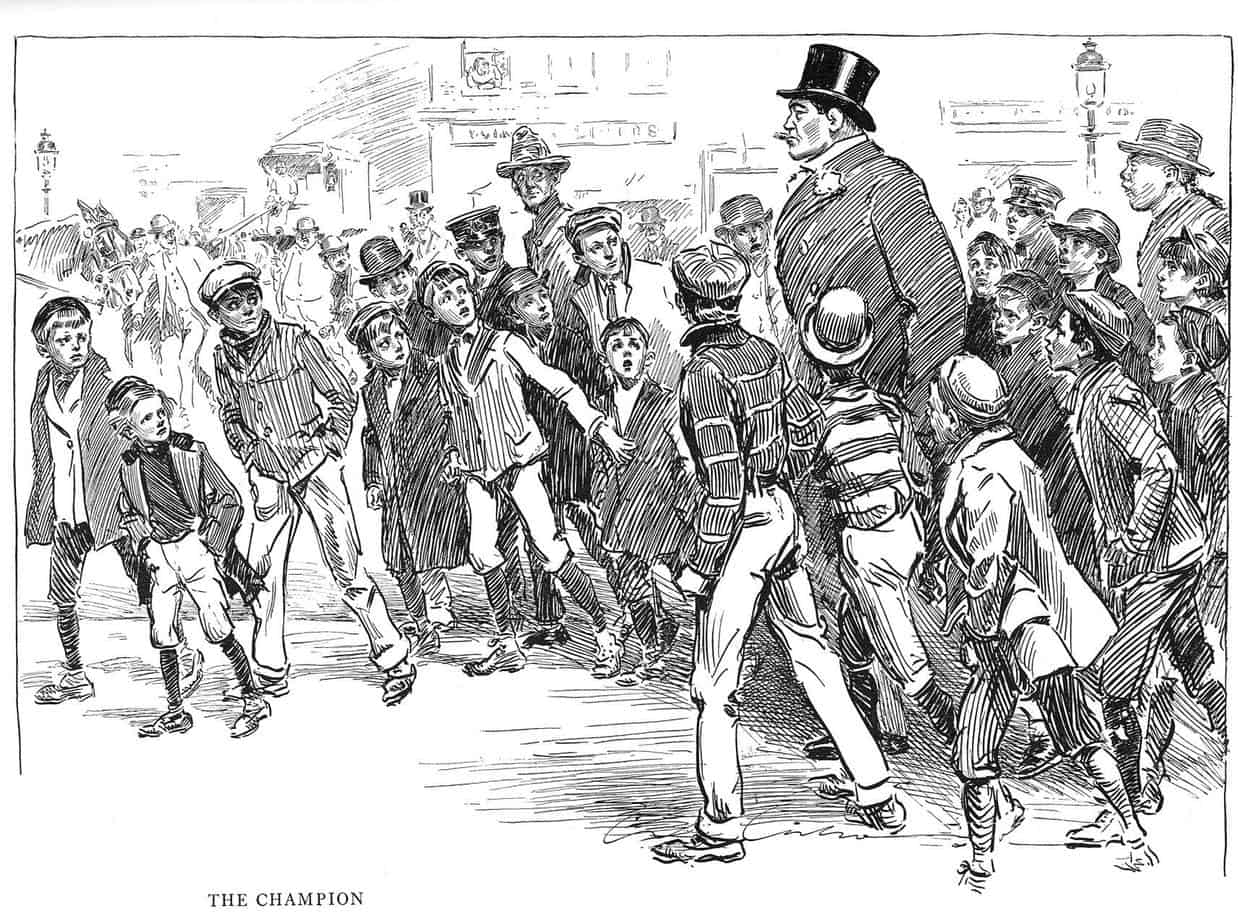
SETTING OF “CHAMPION”
“Champion” starts out in Chicago (shortened to “Chi” later in the story). Midge moves around to other places such as Milwaukee, New York, New Orleans. The eventual setting fiction about Midge is that he also has a wife up in Canada (outside the range of the American media) with five sons, all ‘dead ringers’ for Midge: the ultimate dream for a man who has dreams of being all-powerful.
The pattern of domestic abuse isn’t so different from how it works today, with the following noteworthy addition:
“I’ll put you in a hospital where they’ll keep you quiet.”
Last century, sending ‘crazy’ wives and girlfriends to mental asylums was one strategy used by men to get rid of partners they no longer wanted. This was considered an alternative to divorce, for which the man could not be blamed. It was more common in the 1800s, but continued into the 1900s.
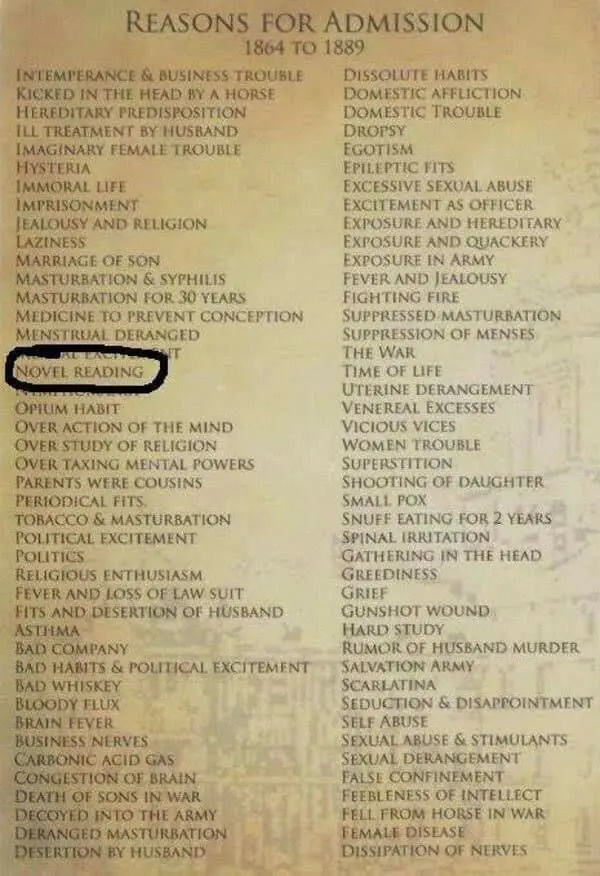
CHARACTERS OF “CHAMPION”
The cast of characters in “Champion” is a long one, because the point is that Midge goes through people like they’re nothing, one person after another after another. They are listed again at the end, to remind us of all the people he has screwed over.
For a full list of the characters, see here.
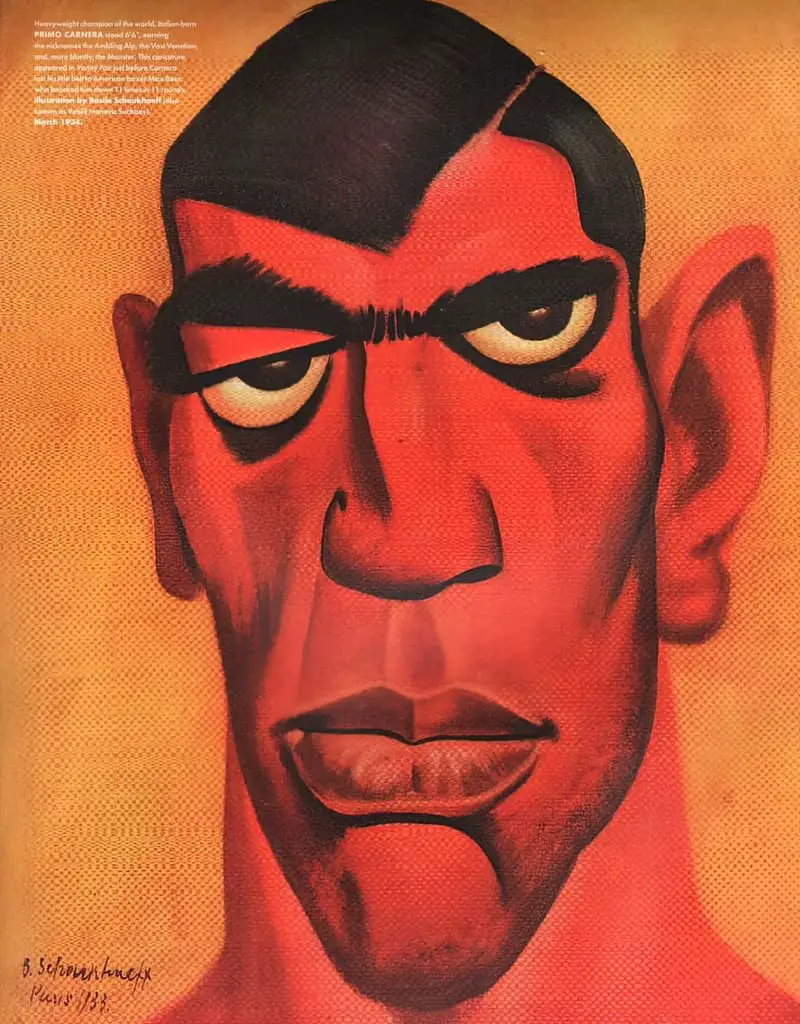
STORY STRUCTURE OF “CHAMPION”
This story is dialogue heavy and written in a working class Northern American lower class dialect of a century ago. All considered, it’s amazingly simple to read, and I’m sure it’d be satisfying to listen to.
Legend has it that his spelling wasn’t very good, though he was super smart academically. In those days, spelling alone could let you down in school.
SHORTCOMING
Midge (Michael Kelly) is a man who uses violence like a workshop tool. He could be a sociopath, and this serves him well. Midge is more like a robotic horror opponent than a fleshed-out main man with human shortcomings and needs. I don’t even code his sociopathy as a shortcoming.
Instead, we see the cast around him suffer because of their own shortcomings. “Champion” is a good case study in stories which create a cardboard ‘main character’ then delve into how that person wreaks destruction on those around him.
Tony Soprano is a similar character in that regard.
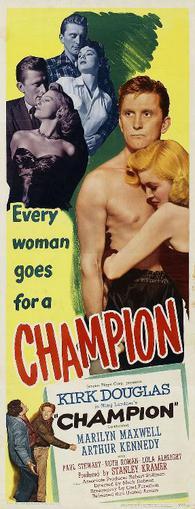
Interesting that when this story was adapted for film in 1949, the screenwriters gave Midge more humanity.
Possibly we should be grateful that the makers of the film have sweetened the character just a little from the way he was in the tale, for Mr. Lardner’s Midge Kelly was as cruel and contemptible as they come.
New York Times
Reason given: the audience can put up with a one-dimensional psycho for main character in a short story, but watching him on screen for full movie-length would be highly unpleasant. In other words, you can’t get away with one-dimensional main characters in works of length.
DESIRE
As Midge observes, everyone around him wants a piece of him for his fame, his money, his prestige.
OPPONENT
Everyone in Midge’s life is an opponent, because this is a man incapable of friendships and genuine romance.
PLAN
Nothing stands in Midge’s way because he has the superpower gift of his fists. So when he gets in trouble for beating up his disabled brother, he simply leaves home to make his fortune. And so he does, going from strength to strength.
BIG STRUGGLE
Because this guy is a fighter we see an endless stream of punches and kicks. There’s no big fight that will determine the course of this guy’s future — after a while we know he’s going to win.
Is it just me, or is everyone else waiting to see Midge get his punishment? I thought the industry itself might chew him up and spit him out. Most stories are conservative in their values — bad characters meet bad endings.
ANAGNORISIS
But this story subverts that expectation and ends with the following message: Once people are champions, their audience wants them to remain champions.
This is absolutely mimetic to real life. It works especially well for white men. We have seen it over the last few years in men who have been accused of assault then come back and keep on doing whatever’s been making them money. I’m sure Ring Lardner witnessed this himself, while working as a sports journalist. He must have wondered how such assholes can keep doing what they’re doing.
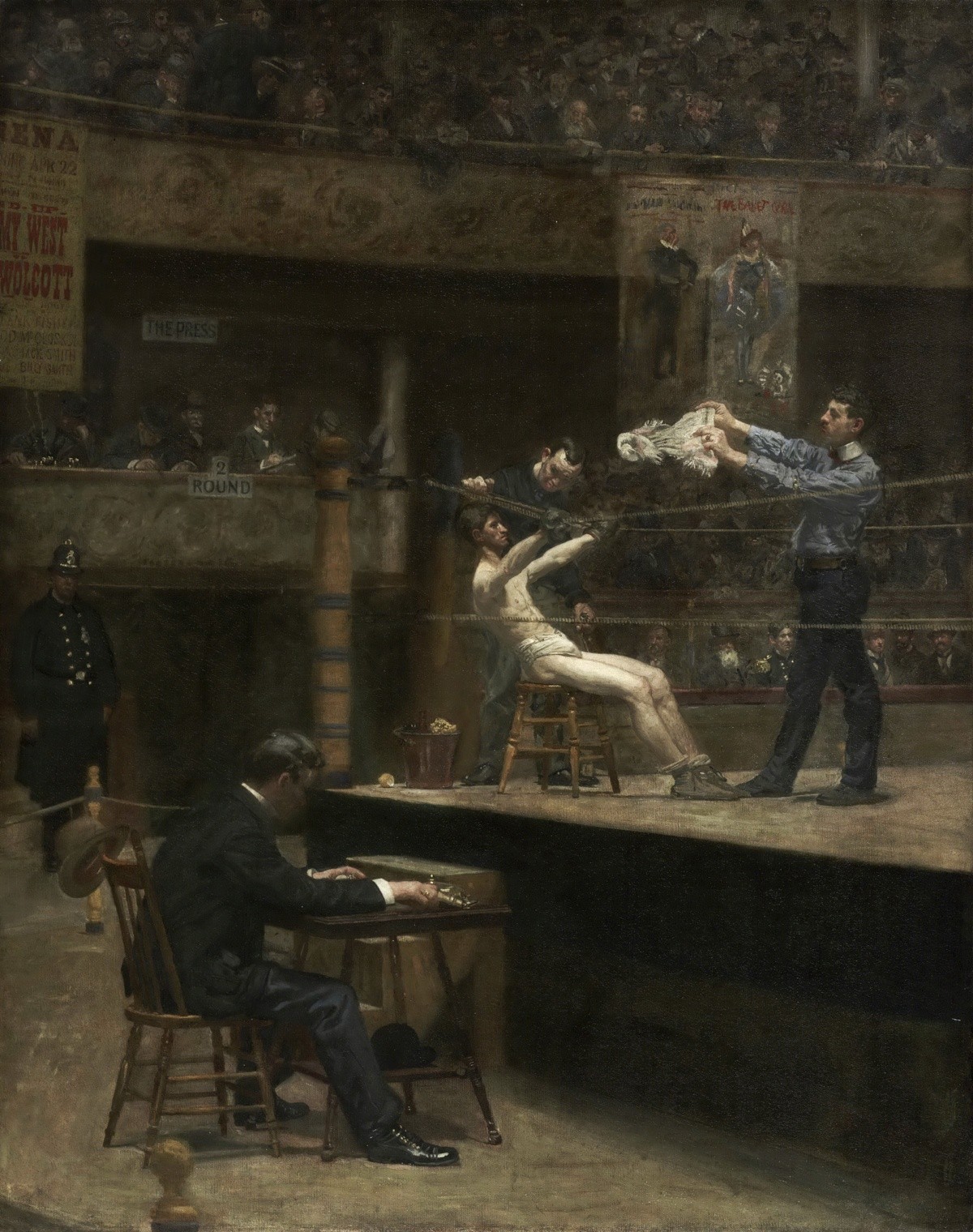
NEW SITUATION
The answer, of course, is that an audience loves a champion.
It’s about wish fulfilment. We project our own wish to be famous and powerful onto celebrities and if they fall, we fall. There’s also the cognitive bias of sunk cost, in which we tend to stick with those into whom we’ve already invested our attention. It’s related to status quo bias, in which we prefer things how they are, even if that thing happens to be a patriarchy powered by toxic masculinity.
COMPARE AND CONTRAST
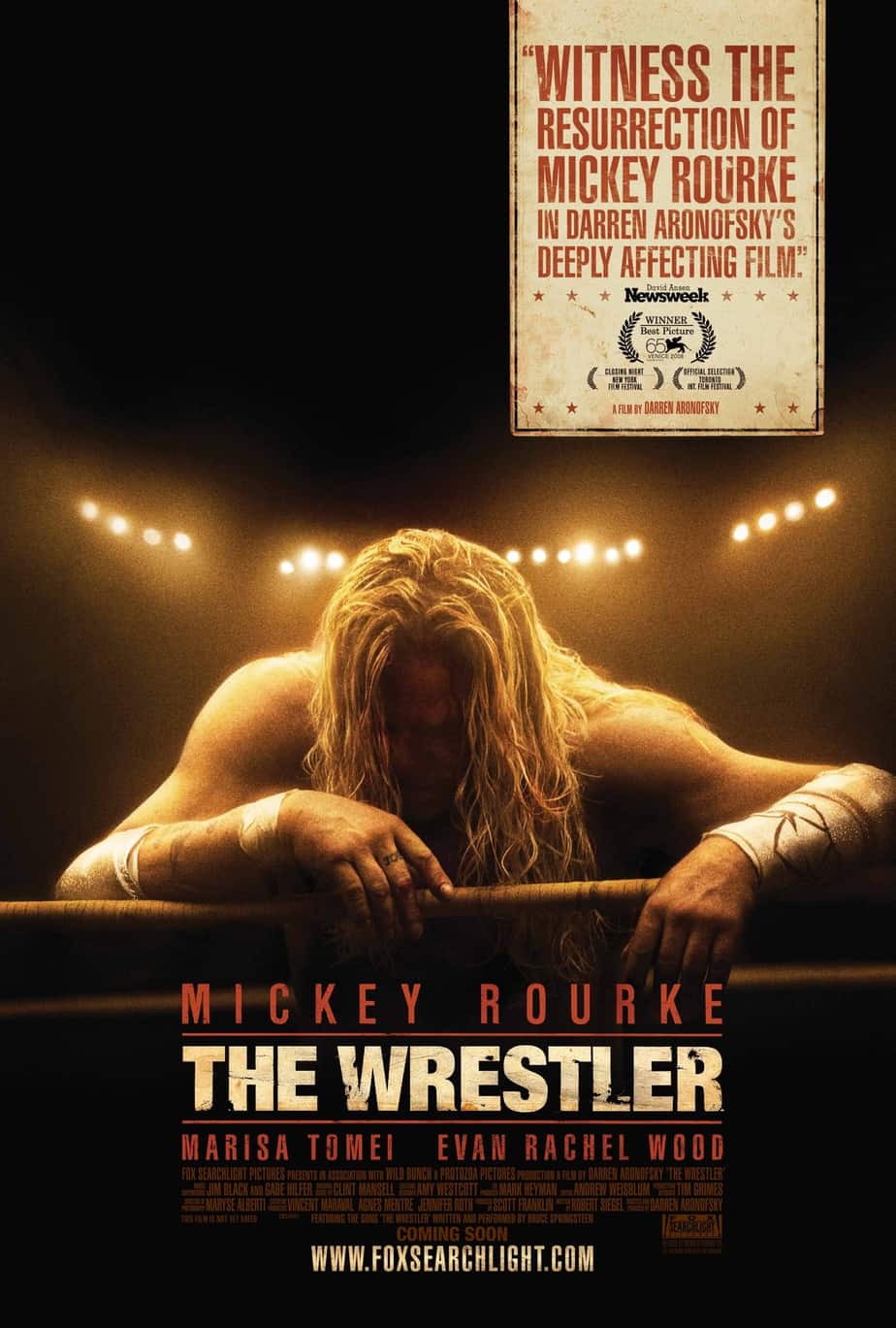
In one way this short story reminds me of the film The Wrestler, which is about how the modern American wrestling entertainment industry uses their wrestlers up and spits them out, without looking after them when their bodies become too broke to fight. But the main character of The Wrestler is a sympathetic figure and he is the underdog. Midge is no sympathetic underdog. Because I’ve seen The Wrestler, I know to expect he will get his comeuppance from the industry itself.
But no. Midge remains top dog. But even in The Wrestler, broken fighters remain top dog in the minds of the audience, and that’s what brings in the bucks.
If we met Midge at the end of his life, we might find someone looking more defeated, as Mickey Rourke looks in that poster.
